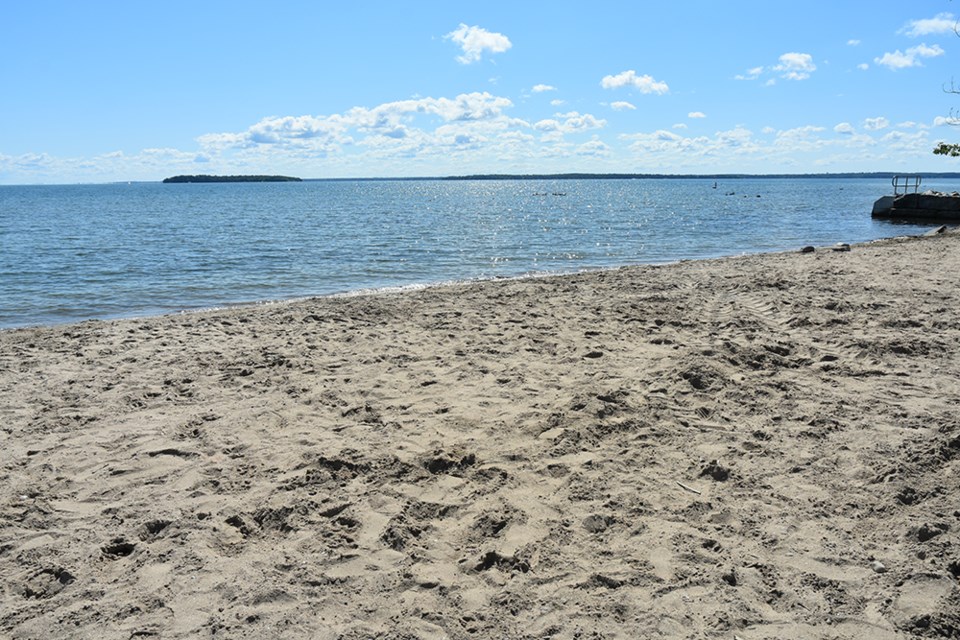If you're planning a visit to an area beach, you can check first to make sure it's safe for swimming.
The Simcoe Muskoka District Health Unit monitors water safety at dozens of beaches in Simcoe County and Muskoka Region – checking E.coli bacteria levels on a weekly basis, and watching for other potential hazards, including outbreaks of toxic blue-green algae.
When E.coli levels – the kind of bacteria found in feces – are elevated, the health unit issues a swimmer’s advisory, warning of the increased risk of infection for those who venture into the water.
Beaches remain open, but a swimmer is advised to refrain from ducking his or her head or ingesting the water, due to the risk.
Beaches are only closed if there is a serious health risk, or if – as in the case of Tynedale Park Beach and Wilkins Park in Barrie – there has been damage that makes them unsafe. The two Barrie beaches were temporarily closed while city crews cleaned up after a major rainstorm earlier this week.
With another hot weekend in the forecast, the information gathered by the SMDHU is important. For the latest test results, check the ‘Safe Water’ topic on the health unit website, and the Beach Water Testing webpage (click here).
As of Aug. 6, all of the beaches at Innisfil Beach Park, both north and south, were given a green light for swimming.
Leonard’s Beach, at the end of Line 10, was also clear – but once again the new 9th Line Beach Park (BonSecours Beach) was a different story.
The waters of Lake Simcoe at Line 9 look pristine, but E.coli is invisible, and testing has shown unsafe levels of the bacteria.
Christina Wieder, manager of the Environmental Health Dept., explained that advisories are issued when the “geometric mean concentration” in a minimum of five water samples exceeds 200 E.coli per 100 mL.
“Elevated levels can occur in recreational beach water due to heavy rainfall, large number of swimmers, large number of birds and animals,” Wieder noted. “High winds and waves may also impact the water quality.”
Some have suggested that the design of the stormwater areas at the 9th Line park may be partly to blame, unable to handle the volume of runoff received during recent storms.
A walk along the beach uncovers a more likely cause: piles of goose droppings on the sand, near the water’s edge.
Canada geese are notorious for fouling beaches. According to reports, an adult goose can produce an average of 2 lbs. (nearly a kilogram) of droppings each day.
The Town of Innisfil was contacted about the situation at BonSecours Beach.
“Our operations team has advised that they are following guidance from the Ministry of Natural Resources and have used a buffer zone (patches of naturalized space) to act as a deterrent for geese landing,” said Jenn Rae, communications co-ordinator. “The best deterrent to geese is people, so with the busy summer we have had at our beaches, we haven’t had many calls about this issue.”
Town staff do attend the beach - and all other beaches along the shore (Line 10, Line 12 and Innisfil Beach Park) - at least three times a week, to carry out "grooming practices" and remove debris, she said.



